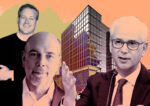Trending
Developers target “naturally occurring” affordable housing
US has 5.6M cheap market-rate units: CoStar data
Developers are setting their sights on unsubsidized housing, which has long been an affordable housing policy “blind spot.”
There are 5.6 million inexpensive market-rate units in the United States, according to CoStar Group data cited by Bloomberg.
These types of apartments are not subsidized by the government, but remain affordable to working-class tenants because of their location and their age. They are attractive to investors who focus on fixing them up and raising rents — a practice which removes them from the reach of low-income renters. This type of activity goes largely unnoticed and unregulated, according to Bloomberg.
“It has really been a blind spot in affordable housing policy at the local, state and federal levels,” Stockton Williams, executive director of the Terwilliger Center for Housing at the Urban Land Institute, told Bloomberg. “The economics don’t work for the private sector to build this kind of housing, so we’ll have less of it over time unless what’s already built is acquired and preserved.”
In order to take stock of the country’s affordable housing, CoStar gave multifamily properties a ranking of one to five stars. The ranking looked at quality of design, structural systems and other factors. It was not based on rent prices or affordability.
“We have to figure out how to build more housing, whether it’s a single-family house or an apartment building,” Hans Nordby, managing director at CoStar Portfolio Strategy, told the website. “If we don’t, we’re going to risk boiling down the social stew to rich people and the people who serve them lunch.”
The creation of affordable housing has been a signature policy for Mayor Bill de Blasio. The administration said it has created more than 50,000 low-income apartments since de Blasio took office. According to 2015, figures from the Manhattan Institute, there are around 49,800 naturally occurring affordable housing units in the city at any given time. [Bloomberg] — Miriam Hall




